- Home
- Stephen Baxter
Exultant
Exultant Read online
Table of Contents
Title Page
Dedication
Part 1
Chapter 1
Chapter 2
Chapter 3
Chapter 4
Chapter 5
Chapter 6
Chapter 7
Chapter 8
Chapter 9
Chapter 10
Chapter 11
Chapter 12
Chapter 13
Chapter 14
Chapter 15
Chapter 16
Chapter 17
Chapter 18
Part 2
Chapter 19
Chapter 20
Chapter 21
Chapter 22
Chapter 23
Chapter 24
Chapter 25
Chapter 26
Chapter 27
Chapter 28
Chapter 29
Chapter 30
Chapter 31
Chapter 32
Chapter 33
Chapter 34
Part 3
Chapter 35
Chapter 36
Chapter 37
Chapter 38
Chapter 39
Chapter 40
Chapter 41
Chapter 42
Chapter 43
Chapter 44
Chapter 45
Chapter 46
Chapter 47
Chapter 48
Chapter 49
Chapter 50
Chapter 51
Chapter 52
Chapter 53
Chapter 54
Chapter 55
Chapter 56
Chapter 57
Chapter 58
Chapter 59
Also by Stephen Baxter
Copyright Page
To Gregory Benford
ONE
In the past we humans, struggling to comprehend our place in the universe, imagined gods, and venerated them.
But now we have looked across the width of the universe, and from its beginning to its end. And we know there are no gods.
We are the creators of the future. And the only entities worthy of our veneration are our own descendants, who, thanks to our selfless striving, will occupy the gods’ empty thrones.
But we have a Galaxy to win first.
—The Doctrines of Hama Druz
(5408 c.e.; Year Zero of the
Third Expansion of Mankind)
Chapter 1
Far ahead, bathed in the light of the Galaxy’s center, the nightfighters were rising.
From his station, Pirius could see their black forms peeling off the walls of their Sugar Lump carriers. They spread graceful wings, so black they looked as if they had been cut out of the glowing background of the Core. Some of them were kilometers across. They were Xeelee nightfighters, but nobody in Strike Arm called them anything but flies.
They converged on the lead human ships, and Pirius saw cherry-red light flaring.
His fragile greenship hovered over the textured ground of a Rock. The Rock was an asteroid, a dozen kilometers across, charcoal gray. Trenches had been dug all over its surface, interconnecting and intersecting, so that the Rock looked like an exposed brain. Sparks of light crawled through those complex lines: soldiers, infantry, endlessly digging, digging, digging, preparing for their own collisions with destiny. It was a good hour yet before this Rock and Pirius’s own greenship would reach the battlefield, but already men and women were fighting and dying.
There was nothing to do but watch, and brood. There wasn’t even a sense of motion. Under the Assimilator’s Claw’s pulsing sublight drive it was as if he were floating, here in the crowded heart of the Galaxy. Pirius worried about the effect of the wait on his crew.
Pirius was nineteen years old.
He was deep in the Mass, as pilots called it—the Central Star Mass, officially, a jungle of millions of stars crammed into a ball just thirty light-years across, a core within the Core. Before him a veil of stars hung before a background of turbulent, glowing gas; he could see filaments and wisps light-years long, drawn out by the Galaxy’s magnetic field. This stellar turmoil bubbled and boiled on scales of space and time beyond the human, as if he had been caught at the center of a frozen explosion. The sky was bright, crowded with stars and clouds, not a trace of darkness anywhere.
And through the stars he made out the Cavity, a central bubble blown clear of gas by astrophysical violence, and within that the Baby Spiral, a swirl of stars and molecular clouds, like a toy version of the Galaxy itself embedded fractally in the greater disc. That was the center of the Galaxy, a place of layered astrophysical machinery. And it was all driven by Chandra, the brooding black hole at the Galaxy’s very heart.
This crowded immensity would have stunned a native of Earth—but Earth, with its patient, long-lived sun, out in the orderly stellar factory of the spiral arms, was twenty-eight thousand light-years from here. But Pirius had grown up with such visions. He was the product of a hundred generations grown in the birthing tanks of Arches Base, formally known as Base 2594, just a few light-years outside the Mass. He was human, though, with human instincts. And as he peered out at the stretching three-dimensional complexity around him he gripped the scuffed material of his seat, as if he might fall.
Everywhere Pirius looked, across this astrophysical diorama, he saw signs of war.
Pirius’s ship was one of a hundred green sparks, ten whole squadrons, assigned to escort this single Rock alone. When Pirius looked up he could see more Rocks, a whole stream of them hurled in from the giant human bases that had been established around the Mass. Each of them was accompanied by its own swarm of greenships. Upstream and down, the chain of Rocks receded until kilometers-wide worldlets were reduced to pebbles lost in the glare. Hundreds of Rocks, thousands perhaps, had been committed to this one assault. It was a titanic sight, a mighty projection of human power.
But all this was dwarfed by the enemy. The Rock stream was directed at a fleet of Sugar Lumps, as those Xeelee craft were called, immense cubical ships that were themselves hundreds of kilometers across—some even bigger, some like boxes that could wrap up a whole world.
The tactic was crude. The Rocks were simply hosed in toward the Sugar Lumps, their defenders striving to protect them long enough for them to get close to the Lumps, whereupon their mighty monopole cannons would be deployed. If all went well, damage would be inflicted on the Xeelee, and the Rocks would slingshot around a suitable stellar mass and be hurled back out to the periphery, to be reequipped, remanned, and prepared for another onslaught. If all did not go well—in that case, duty would have been done.
As the Claw relentlessly approached the zone of flaring action, one ship dipped out of formation, swooping down over the Rock in a series of barrel rolls. That must be Dans, one of Pirius’s cadre siblings. Pirius had flown with her twice before, and each time she had shown off, demonstrating to the toiling ground troops the effortless superiority of Strike Arm, and of the Arches squadrons in particular—and in the process lifting everybody’s spirits.
But it was a tiny human gesture lost in a monumental panorama.
Pirius could see his crew, in their own blisters: his navigator Cohl, a slim woman of eighteen, and his engineer, Enduring Hope, a calm, bulky young man who looked older than his years, just seventeen. While Cohl and Hope were both rookies, nineteen-year-old Pirius was a comparative veteran. Among greenship crews, the mean survival rate was one point seven missions. This was Pirius’s fifth mission. He was growing a reputation as a lucky pilot, a man whose crew you wanted to be on.
“Hey,” he called now. “I know how you’re feeling. They always say this is the worst part of combat, the ninety-nine percent of it that’s just waiting around, the sheer bloody bo
redom. I should know.”
Enduring Hope looked across and waved. “And if I want to throw up, lift the visor first. That’s the drill, isn’t it?”
Pirius forced a laugh. Not a good joke, but a joke.
Enduring Hope: defying all sorts of rules, the engineer called himself not by his properly assigned name, a random sequence of letters and syllables, but an ideological slogan. He was a Friend, as he styled it, a member of a thoroughly illegal sect that flourished in the darker corners of Arches Base, and, it was said, right across the Front, the great sphere of conflict that surrounded the Galaxy’s heart. Illegal or not, right now, as the flies rose up and people started visibly to die, Hope’s faith seemed to be comforting him.
But navigator Cohl, staring ahead at the combat zone, was closed in on herself.
The Claw was a greenship, a simple design that was the workhorse of Strike Arm; millions like it were in action all around the war zone. Its main body was a bulbous pod containing most of the ship’s systems: the weapons banks, the FTL drive and two sublight drive systems. From the front of the hull projected three spars, giving the ship the look of a three-pronged claw, and at the tip of each prong was a blister, a clear bubble, containing one of the Claw’s three crew. For greenship crews, nobody else mattered but each other; it was just three of them lost in a dangerous sky—Three Against the Foe, as Strike Arm’s motto went.
Pirius knew there were good reasons for the trifurcated design of the greenship. It was all to do with redundancy: the ship could lose two of its three blisters and still, in theory anyhow, fulfill its goals. But right now Pirius longed to be able to reach through these transparent walls, to touch his crewmates.
He said, “Navigator? You still with us?”
He saw Cohl glance across at him. “Trajectory’s nominal, Pilot.”
“I wasn’t asking about the trajectory.”
Cohl shrugged, as if resentfully. “What do you want me to say?”
“You saw all this in the briefing. You knew it was coming.”
It was true. The whole operation had been previewed for them by the Commissaries, in full Virtual detail, down to the timetabled second. It wasn’t a prediction, not just a guess, but foreknowledge: a forecast based on data that had actually leaked from the future. The officers hoped to deaden fear by making the events of the engagement familiar before it happened. But not everybody took comfort from the notion of a predetermined destiny.
Cohl was staring out through her blister wall, her lips drawn back in a cold, humorless smile. “I feel like I’m in a dream,” she murmured. “A waking dream.”
“It isn’t set in stone,” Pirius said. “The future.”
“But the Commissaries—”
“No Commissary ever set foot in a greenship—none of them is skinny enough. It isn’t real until it happens. And now is when it happens. It’s in our hands, Cohl. It’s in yours. I know you’ll do your duty.”
“And kick ass,” Enduring Hope shouted.
He saw Cohl grin at last. “Yes, sir!”
A green flash distracted Pirius. A ship was hurtling out of formation. One of its three struts was a stump, the blister missing. As it sailed by, Pirius recognized the gaudy, spruced-up tetrahedral sigil on its side. It was Dans’s ship.
He called, “Dans? What—”
“Predestination my ass,” Dans yelled on the ship-to-ship line. “Nobody saw that coming.”
“Saw what?”
“See for yourself.”
Pirius swept the crowded sky, letting Virtual feeds pour three-dimensional battlefield data into his head.
In the seconds he’d spent on his crew, everything had changed. The Xeelee hadn’t stayed restricted to their source Sugar Lumps. A swarm of them speared down from above his head, from out of nowhere, heading straight for Pirius’s Rock.
Pirius hadn’t seen it. Sloppy, Pirius. One mistake is enough to kill you.
“This wasn’t supposed to happen,” Cohl said.
“Forget the projections,” Pirius snapped.
There were seconds left before the flies hit the Rock. He saw swarming activity in its runs and trenches. The poor souls down there knew what was coming, too. Pirius gripped his controls, and tried to ignore the beating of his heart.
Four, three, two.
The Xeelee—pronounced Zee-lee—were mankind’s most ancient and most powerful foe.
According to the scuttlebutt on Arches Base, in the training compounds and the vast open barracks, there were only three things you needed to know about the Xeelee.
First, their ships were better than ours. You only had to see a fly in action to realize that. Some said the Xeelee were their ships, which probably made them even tougher.
Second, they were smarter than us, and had a lot more resources. Xeelee operations were believed to be resourced and controlled from Chandra itself, the fat black hole at the Galaxy’s very center. In fact, military planners called Chandra, a supermassive black hole, the Prime Radiant of the Xeelee. How could anything we had compete with that?
And third, the Xeelee knew what we would do even before we decided ourselves.
This interstellar war was fought with faster-than-light technology, on both sides. But if you flew FTL you broke the bounds of causality: an FTL ship was a time machine. And so this was a time-travel war, in which information about the future constantly leaked into the past.
But the information was never perfect. And every now and again, one side or the other was able to spring a surprise. This new maneuver of the Xeelee had not been in the Commissaries’ careful projections.
Pirius felt his lips draw back in a fierce grin. The script had been abandoned. Today, everything really was up for grabs.
But now cherry-red light flared all around the Rock’s ragged horizon.
On the loops, orders chattered from the squadron leaders. “Hold your positions. This is a new tactic and we’re still trying to analyze it.” “Number eight, hold your place. Hold your place.”
Pirius gripped his controls so tight his fingers ached.
That red glare was spreading all around the Rock’s lumpy profile, a malevolent dawn. Most of the action was taking place on the far side of the Rock from his position—which was itself most unlike the Xeelee, who were usually apt to come swarming all over any Rock they attacked.
The Claw would be sheltered from the assault, for the first moments, anyhow. That meant Pirius was in the wrong place. He wasn’t here to hide, but to fight. But he had to hold his station, until ordered otherwise.
Pirius glimpsed a fly standing off from the target. It spread night-dark wings—said to be not material but flaws in the structure of space itself—and extended a cherry-red starbreaker beam. The clean geometry of these lethal lines had a certain cold beauty, Pirius thought, even though he knew what hell was being unleashed for those unlucky enough to be caught on the exposed surface of the Rock.
Now, though, the rectilinear perfection of the starbreaker beam was blurred, as a turbulent fog rose over the Rock’s horizon.
Cohl said, “What’s that mist? Air? Maybe the starbreakers are cutting through to the sealed caverns.”
“I don’t think so,” said Enduring Hope levelly. “That’s rock. A mist of molten rock. They are smashing the asteroid to gas.”
Molten rock, Pirius thought grimly, no doubt laced with traces of what had recently been complex organic compounds, thoroughly burned.
But still, for all the devastation they were wreaking, the Xeelee weren’t coming around the horizon. They were focusing all their firepower on one side of the Rock.
Still Pirius waited for orders, but the tactical analysis took too long. Suddenly, human ships came fleeing around the curve of the Rock, sparks of Earth green bright against the dull gray of the asteroid ground. The formation had collapsed, then, despite the squadron leaders’ continuing bellowed commands. And down on the Rock those little flecks of light, each a human being trapped in lethal fire, swarmed and scattered, fanning
out of the trench system and over the open ground. Even from here, it looked like panic, a rout.
It got worse. All across the Rock’s visible hemisphere implosions began, as if its surface was being bombarded by unseen meteorites. But the floors of these evanescent craters broke up and collapsed, and through a mist of gray dust a deeper glow was revealed, coming up from inside the Rock. It was as if the surface were dissolving, and pink-white light was burning its way out of this shell of stone. The Xeelee, Pirius thought: the Xeelee were burning their way right through the Rock itself.
Enduring Hope understood what was happening half a second before Pirius did. “Lethe,” he said. “Get us out of here, Pilot. Lift, lift!”
Cohl said weakly, “But our orders—”
But Pirius was already hauling on his controls. All around him ships were breaking from the line and pulling back.
Even as the Rock fell away, Pirius could see the endgame approaching. For a last, remarkable, instant, the Rock held together, and that inner light picked out the complex tracery of the trench network, as if the face of the Rock was covered by a map of shining threads. The asteroid’s uneven horizon lifted, bulging.

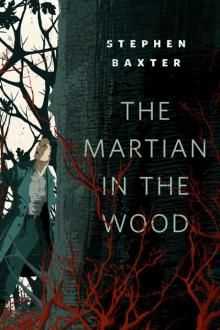 The Martian in the Wood
The Martian in the Wood THE H-BOMB GIRL
THE H-BOMB GIRL World Engine
World Engine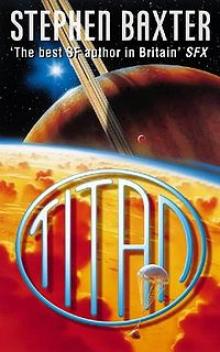 Titan n-2
Titan n-2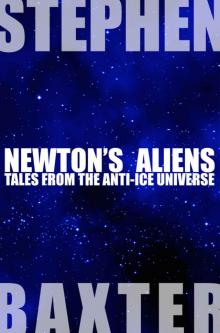 Newton's Aliens: Tales From the Anti-Ice Universe
Newton's Aliens: Tales From the Anti-Ice Universe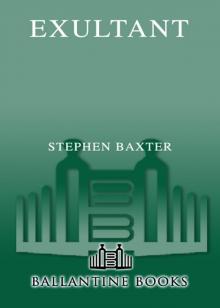 Exultant
Exultant Manifold: Origin
Manifold: Origin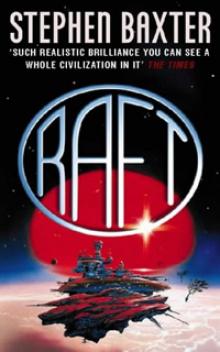 Raft xs-1
Raft xs-1 Bronze Summer n-2
Bronze Summer n-2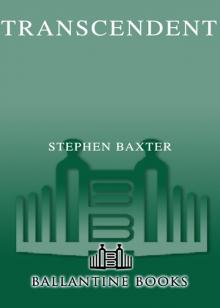 Transcendent
Transcendent Stone Spring
Stone Spring Coalescent
Coalescent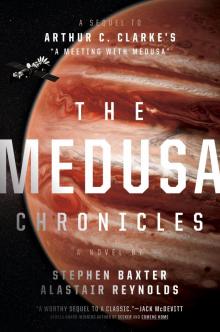 The Medusa Chronicles
The Medusa Chronicles Origin m-3
Origin m-3 Silverhair tm-1
Silverhair tm-1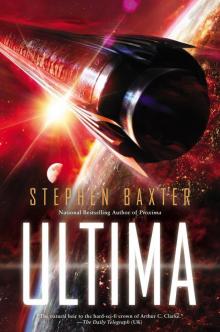 Ultima
Ultima Voyage n-1
Voyage n-1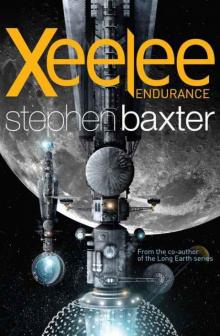 Xeelee: Endurance
Xeelee: Endurance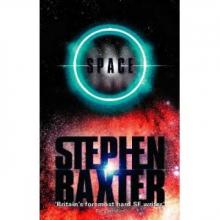 Space m-2
Space m-2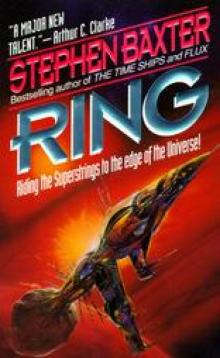 Ring xs-4
Ring xs-4 Raft
Raft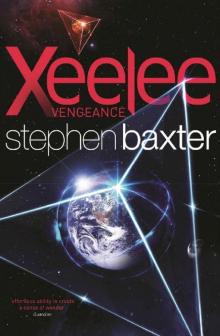 Xeelee: Vengeance
Xeelee: Vengeance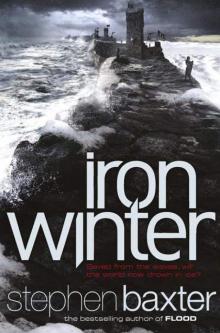 Iron Winter n-3
Iron Winter n-3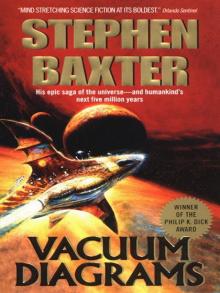 Vacuum Diagrams
Vacuum Diagrams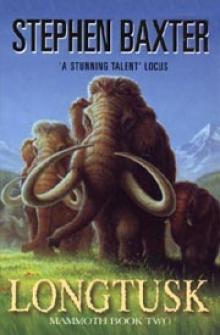 Longtusk tm-2
Longtusk tm-2 Proxima
Proxima Evolution
Evolution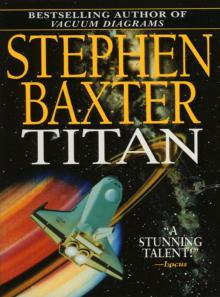 Titan
Titan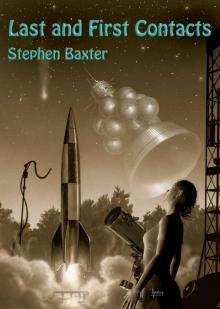 Last and First Contacts (Imaginings)
Last and First Contacts (Imaginings)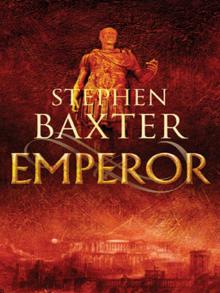 Emperor
Emperor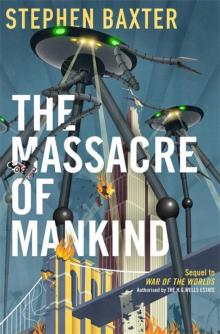 The Massacre of Mankind
The Massacre of Mankind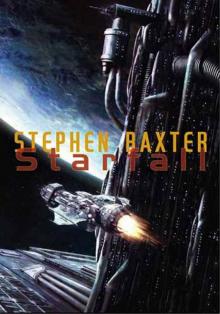 Starfall
Starfall Doctor Who - The Wheel of Ice
Doctor Who - The Wheel of Ice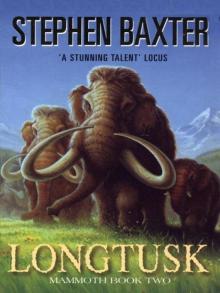 Longtusk
Longtusk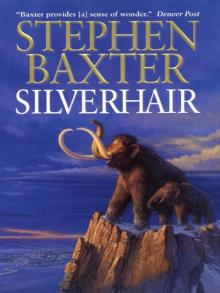 Silverhair
Silverhair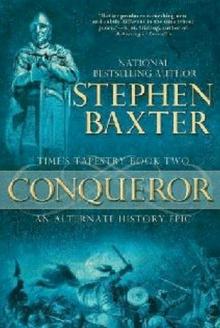 Conqueror tt-2
Conqueror tt-2 Flood
Flood Flood f-1
Flood f-1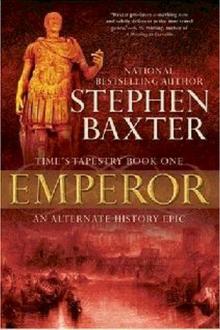 Emperor tt-1
Emperor tt-1 Moonseed
Moonseed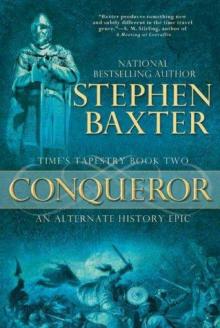 Conqueror
Conqueror Timelike Infinity xs-2
Timelike Infinity xs-2 The Ghost Pit
The Ghost Pit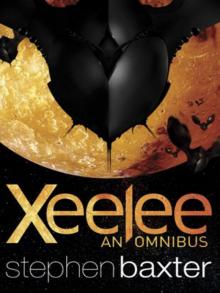 Xeelee: An Omnibus: Raft, Timelike Infinity, Flux, Ring
Xeelee: An Omnibus: Raft, Timelike Infinity, Flux, Ring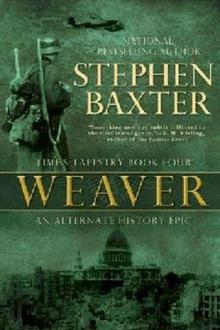 Weaver tt-4
Weaver tt-4 Landfall: Tales From the Flood/Ark Universe
Landfall: Tales From the Flood/Ark Universe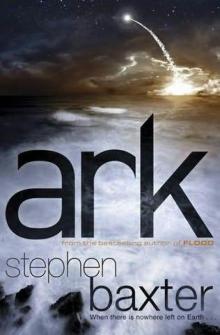 Ark
Ark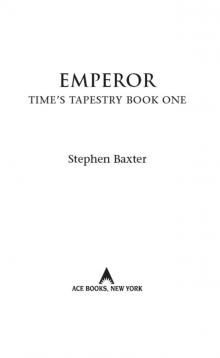 Emperor: Time’s Tapestry Book One
Emperor: Time’s Tapestry Book One Space
Space Icebones
Icebones Manifold: Space
Manifold: Space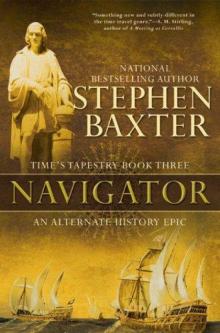 Navigator
Navigator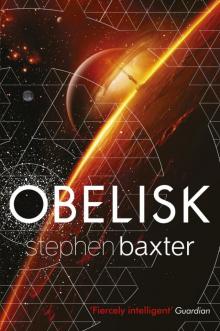 Obelisk
Obelisk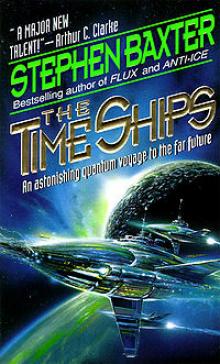 The Time Ships
The Time Ships Bronze Summer
Bronze Summer Resplendent
Resplendent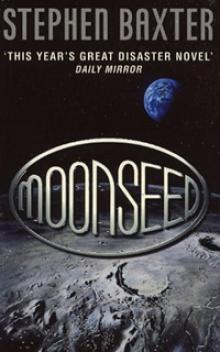 Moonseed n-3
Moonseed n-3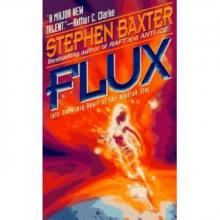 Flux xs-3
Flux xs-3 Transcendent dc-3
Transcendent dc-3 Icebones tm-3
Icebones tm-3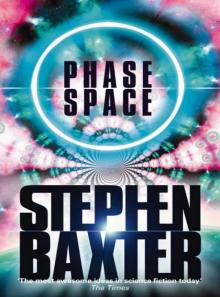 Phase Space
Phase Space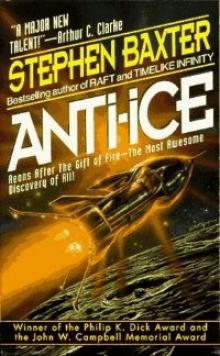 Anti-Ice
Anti-Ice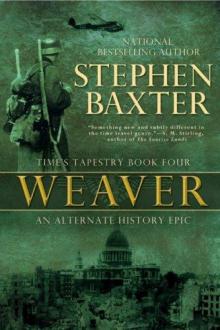 Weaver
Weaver Voyage
Voyage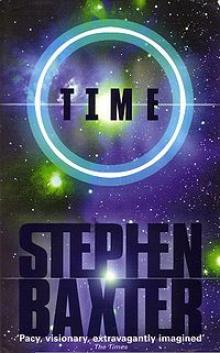 Time m-1
Time m-1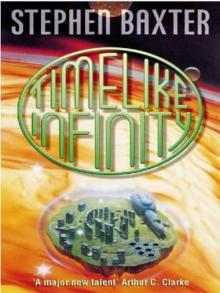 Timelike Infinity
Timelike Infinity Exultant dc-2
Exultant dc-2 Coalescent dc-1
Coalescent dc-1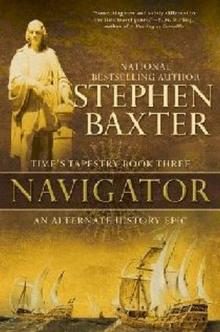 Navigator tt-3
Navigator tt-3